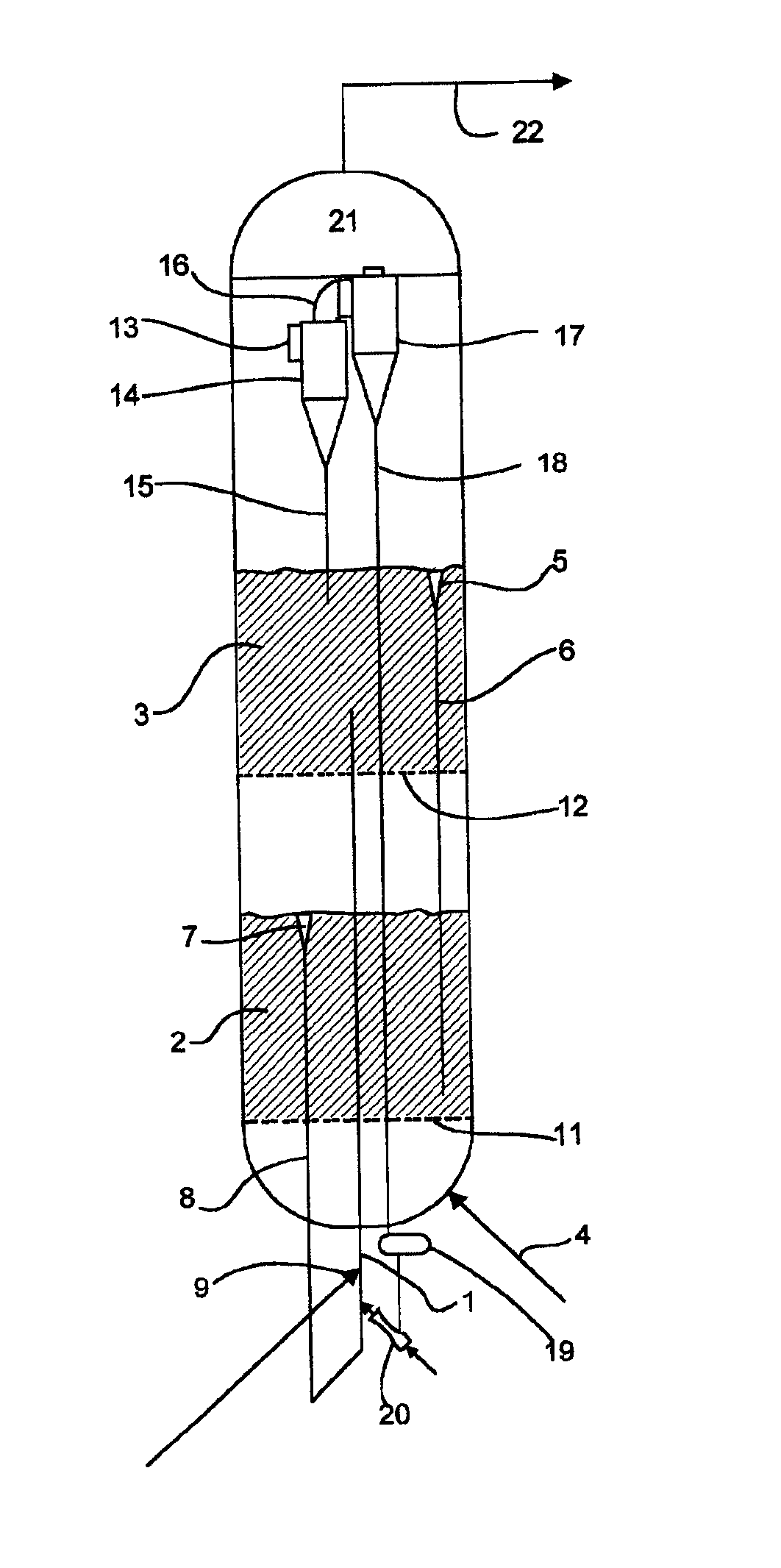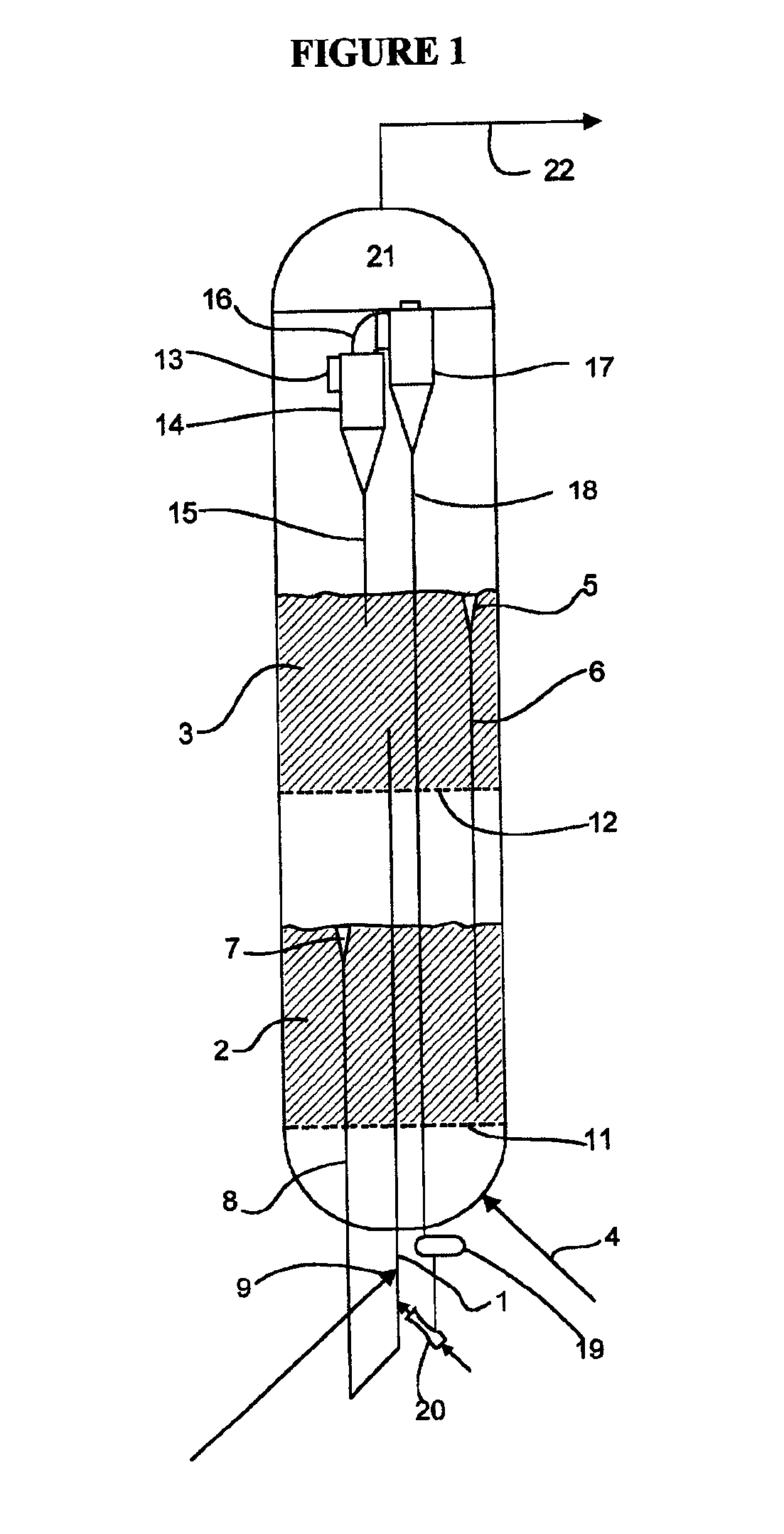Conversion of petroleum residua to methane
a technology of petroleum residua and conversion method, which is applied in the direction of combustible gas production, combustible gas purification/modification, machines/engines, etc., can solve the problems of high cost of catalyst recovery and recycling, and inability of skilled in the art to practice the conversion of liquid feeds,
- Summary
- Abstract
- Description
- Claims
- Application Information
AI Technical Summary
Benefits of technology
Problems solved by technology
Method used
Image
Examples
Embodiment Construction
[0021]Petroleum residue or similar carbonaceous liquid feed is preheated to a temperature between 300° F. and 800° F. The feed is atomized and injected through one or more injectors into a gasification reactor system so as to distribute the feed over fluidized particulate solids which are circulated past the feed injectors. The reactor system is maintained at a pressure between 300 psig and 1000 psig, and at a temperature between 1100° F. and 1400° F. The particulate solids are fluidized by a superheated mixture of steam and recycled hydrogen and carbon monoxide. Upon contacting the hot solids, the liquid feed is thermally decomposed, primarily into methane, hydrogen, and solid petroleum coke. The petroleum coke consists primarily of amorphous carbon and high molecular weight condensed ring hydrocarbons, such that the overall hydrogen content of the coke is typically 2% to 4% by mass. Part of the steam reacts with the hydrocarbon portion of the feed to yield methane and carbon dioxi...
PUM
| Property | Measurement | Unit |
|---|---|---|
| Temperature | aaaaa | aaaaa |
| Temperature | aaaaa | aaaaa |
| Temperature | aaaaa | aaaaa |
Abstract
Description
Claims
Application Information
 Login to View More
Login to View More - R&D
- Intellectual Property
- Life Sciences
- Materials
- Tech Scout
- Unparalleled Data Quality
- Higher Quality Content
- 60% Fewer Hallucinations
Browse by: Latest US Patents, China's latest patents, Technical Efficacy Thesaurus, Application Domain, Technology Topic, Popular Technical Reports.
© 2025 PatSnap. All rights reserved.Legal|Privacy policy|Modern Slavery Act Transparency Statement|Sitemap|About US| Contact US: help@patsnap.com


